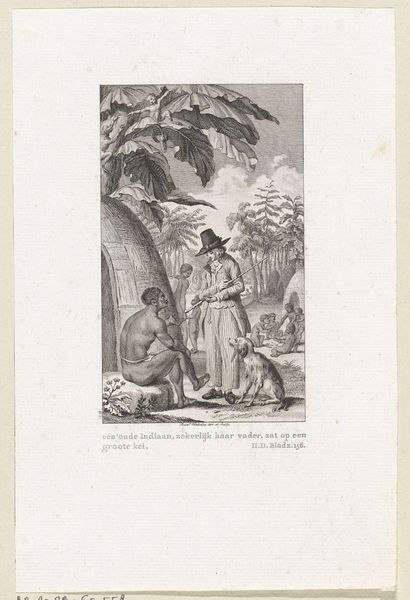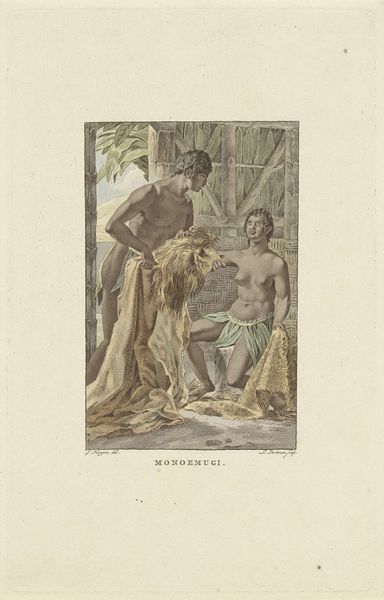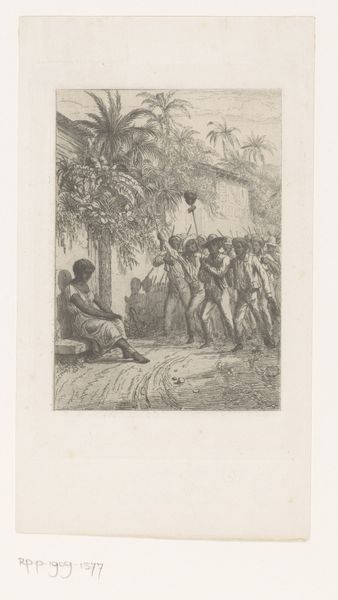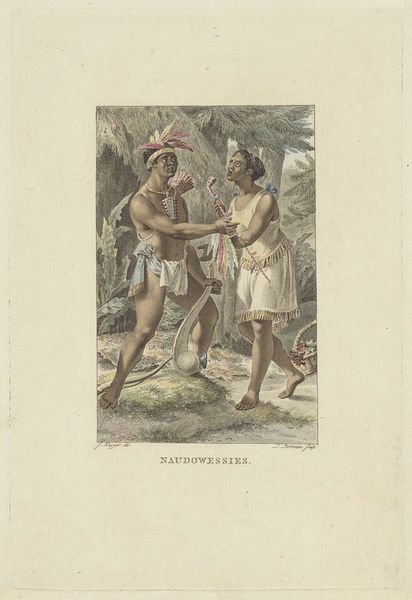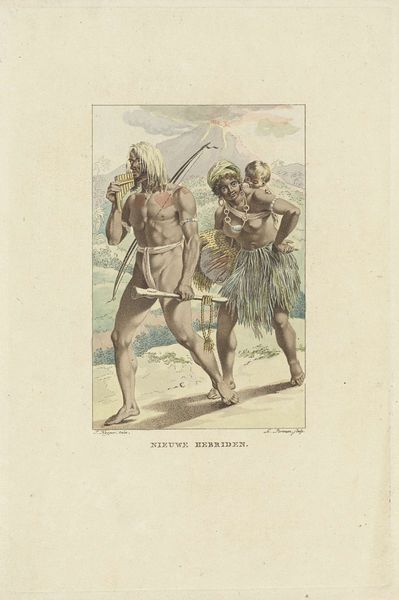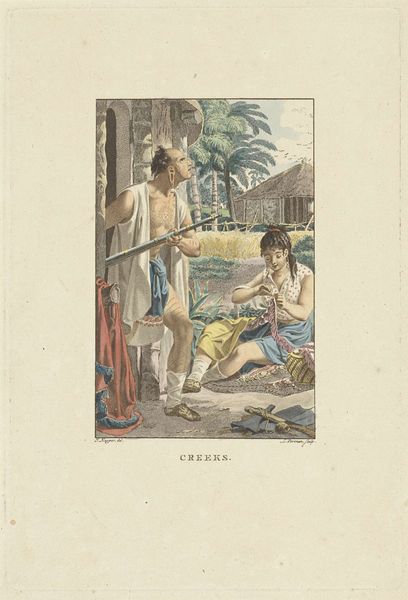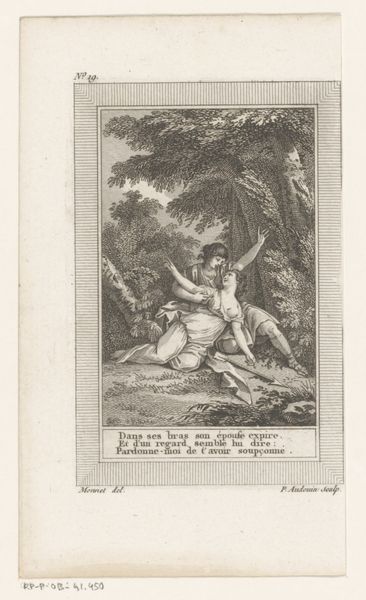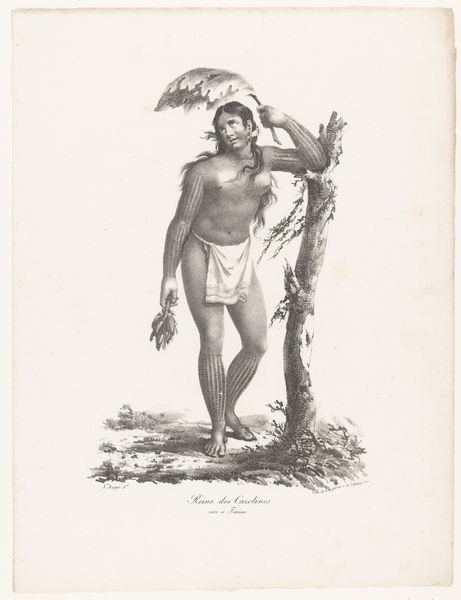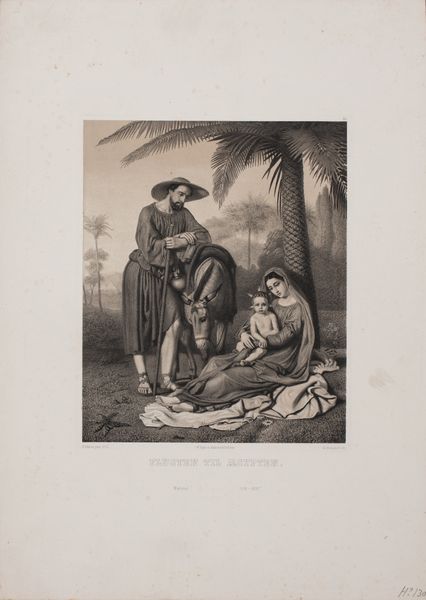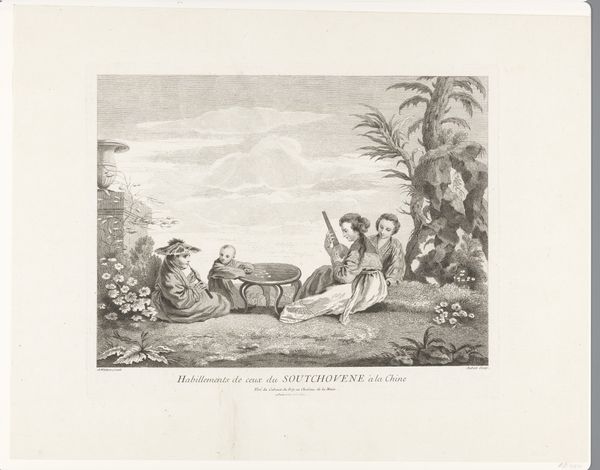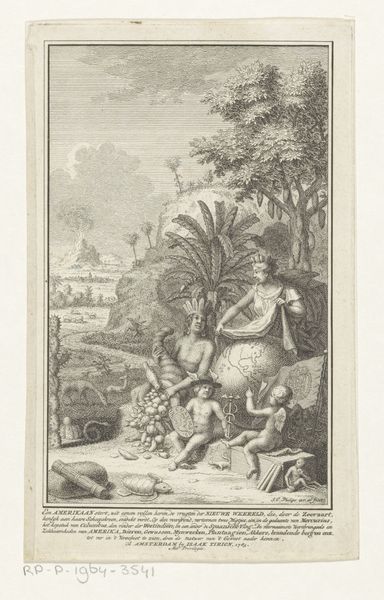
print, engraving
#
portrait
# print
#
landscape
#
figuration
#
engraving
Dimensions: height 254 mm, width 168 mm
Copyright: Rijks Museum: Open Domain
Curator: This engraving, made in 1804 by Ludwig Gottlieb Portman, is titled "Bewoners van Australië" – Residents of Australia. It’s currently housed here at the Rijksmuseum. What strikes you first? Editor: The stark contrast! There’s an unsettling idyllic quality juxtaposed with something almost voyeuristic, achieved through composition, perspective, and this sepia-toned, almost sterile palette. Curator: Well, let's consider the production. Engravings, prints—these were often commissioned and disseminated widely as documentary records or for popular consumption, impacting colonial perceptions. Look at the portrayal: how do the material conditions and intended audience influence this depiction? Editor: Absolutely. I see a deliberate emphasis on the physicality— the man’s muscularity, the details in the woven materials of their shelters. But consider also the arrangement: figures carefully posed, creating a classical triangular composition. Curator: It suggests a controlling Western gaze, exoticizing the Indigenous population, almost staging them for an audience. The spears, shield, even their body adornments become anthropological specimens. Editor: Yet the line work is fascinating! Portman uses varied cross-hatching to define form, creating texture in the landscape. Even if it's filtered through a Western lens, there's still craft evident. Curator: Precisely. Consider the source materials Portman would have used – possibly sketches from explorers or even second-hand accounts. This filters down into his work, further distancing reality from depiction. Editor: And doesn't that say so much about power, about how images serve ideologies? Looking at it through that lens brings out something far less serene than what meets the eye. Curator: It’s an image imbued with social and economic implications, showcasing how artistic methods intersect with colonial ideologies. Editor: I’ll leave with lingering questions on how such composed aesthetics often serve to both reveal and obscure complex power dynamics. Thank you! Curator: A necessary dialogue sparked by considering not just *what* is depicted but *how* and *why*.
Comments
No comments
Be the first to comment and join the conversation on the ultimate creative platform.
